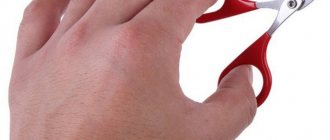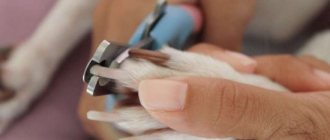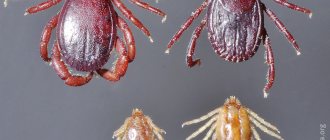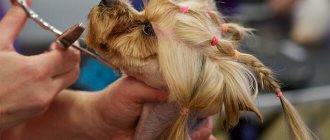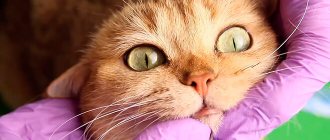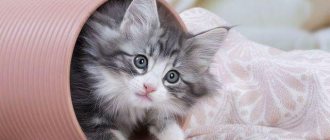Once you have a cat in your home, it brings with it the attendant dilemmas regarding nail care. The most significant problem for cat owners is torn wallpaper, sofas, beds, all kinds of carpets and cabinets, and endless scratches when trying to play with their pet.
This article details how to accurately trim an animal's nails at home without causing harm to yourself or your furry friend. At what age can you trim a kitten’s nails and how to choose the right clipping tool.
Why do you need to trim your nails?
Under natural conditions, claws are constantly ground down on hard soil, tree bark, during hunting and games. But living in comfort and safety, pets show less activity, and scratching posts are among the available means for shortening manicures. Some pets simply ignore scratching posts and unknowingly doom themselves to constant discomfort.
There is another category of cats that definitely need to trim their sharp claws - these are overly aggressive pets, especially towards children, who love to scratch their legs and arms. Although in this case it is better to use silicone anti-scratch pads, because the sharp and uneven edges of a recently trimmed claw can cause unpleasant scratches.
Haircut stages
Place the cat in your arms, with its back facing you. Then, take the foot and press lightly. Treat the claws with a disinfectant and carefully trim them with a nail clipper, smoothing the surface of the claw with a nail file if necessary.
The most difficult thing in this process is not to damage the cat’s blood vessels. They grow almost to the very tips of the claws and if the claw lengthens, they also grow further.
When is the best time to trim nails?
For such an important procedure, you need to use the right moment - when the cat is sleepy or simply calm. If your pet clearly expresses its dissatisfaction - it bites, breaks out, scratches, then you need to calm it down by stroking it. Be sure to praise the cat, even the naughty one.
There are harmful cats and cats that do not get used to the process of cutting their claws, no matter how hard you try. In this case, you can wrap the pest in a blanket and pull out each paw one by one.
The main thing is for the pet to understand that there is nothing terrible in the procedure, and at the end he can receive some pleasant bonus in the form of a treat. If you start cutting nails without reassuring your pet, you risk seriously damaging his trust in you.
To develop loyalty to the procedure, we recommend starting to trim kittens’ claws from 3-4 months of age, when the baby becomes more active and playful. The emergence of a useful habit at an early age eliminates most of the difficulties in this matter.
Here's what not to do:
- Scolding and screaming will cause even more fear in your pet, and it will be extremely difficult to trim claws in the future.
- Trying to catch a cat around the house while playing - the cat will respond to this with aggression, misunderstanding and indignation.
- “Break” a cat by force – you shouldn’t hurt it by trying to get your way.
Choosing a nail clipper
It is necessary to choose a nail clipper based on the physical characteristics of your pet, because there are very small products, for example, suitable exclusively for kittens. And if you have an adult Maine Coon, cutting his nails with such a tool will be inconvenient.
It is better to accustom cats to trim their claws from a very early age, then an adult animal will not have problems with this.
Device size
There are three main sizes - extra small, medium and large. Very small ones made for kittens. Medium ones are suitable for almost all cats, except for the largest specimens. Large ones are, as a rule, nail clippers for dogs, which, however, can also be used for cats.
There is an opinion that it is necessary to evaluate the thickness of an animal’s claw, but you will not find an indicator of the maximum thickness or anything similar on any product. So you need to focus on ease of use.
The choice of nail clipper size is purely individual. Some owners find it more convenient to use large products, while others find it more convenient to use small ones. However, a universal option are medium-sized nail clippers, which are usually labeled “cat-shaped.”
Tool material
The material of the spring mechanisms and the blades themselves are metals, mainly steel and stainless steel.
The handle material is plastic, sometimes with rubberized inserts for better grip in the hand.
When choosing a nail clipper, it is better to focus on its mechanism, ease of use and dimensions than on the materials, which are mostly the same in all products, at least in their names.
Nail clipper scissors are easy to use due to their form factor and are relatively inexpensive
Manufacturer
Among the manufacturers producing mass budget products, you can pay attention to the brands Trixie, Ferplast, Pedi Paws, CaniAMici - they produce a wide variety of products for pets at a good level.
Brands such as Andis, Wahl, Oster - they specialize specifically in haircutting devices, so their products belong to a more premium segment, cost 3-4 times more, however, the sensations when using will be somewhat different - smoother operation of the device, sharper blades, more tactilely pleasant materials.
How often should you trim your nails?
The number of procedures for cutting claws varies, and this is not surprising - the characteristics of each cat’s body are individual. For one cat, it is enough to trim its claws once a month; for another, the treatment will need to be repeated three or even four times. Be guided as the claws grow. If the cat is accustomed to a scratching post, then she will naturally partially grind off her claws, which will prolong the effect of trimming. And if you haven’t managed to develop such a useful habit yet, you can read our effective tips for teaching a scratching post.
As a rule, the more often you trim your nails, the better, even if you trim just a little at a time. By trimming its claws too infrequently and with slow growth, the cat will have time to wean itself off the necessary procedure, and you will have to retrain it.
Claw care is especially important for cats attending exhibitions. For them, cutting nails is not only a hygienic procedure, but also a cosmetic one, since all exhibition animals must not only be healthy, but also look impeccable.
What tools can you use?
There are special nail clippers for trimming cat claws. It is not recommended to use nail scissors. They are designed for thin and flat nail plates of people. Such cutting tools lead to delamination.
There are several types of nail clippers:
- Blisters - resemble nail scissors, but have blades curved at the ends, designed for cat claws.
- Secateurs are equipped with a spring, which is located between the handles. As a rule, such models have a limiter. It allows you to cut only the desired length.
- Guillotines are similar to cigar scissors. The nail is placed in the hole at the end. When the handles are closed, the blade lowers and cuts the claw. The tool is suitable for cats with thick nail plates.
Each owner chooses the model that is convenient for him to use. The main thing is that it is made of high-quality materials and sharpened.
Additionally, you can buy an electric trimmer that allows you to quickly trim your nails. However, not all cats react calmly to it - the buzzing device scares the animals.
What you need to trim nails
To cut cat claws, you need to choose the tool that is most convenient for you, so that it removes excess quickly and painlessly for your pet. You can buy several types of tools to understand exactly which one you intend to use in the future. Since the cat has as many as 18 toes, you can try each type in action.
There are several variations of devices:
- Nail Scissors – The scissors you use to trim your nails should only be used on your teenage kitten's delicate claws. For an adult cat, it is better to have a separate tool, designed taking into account the anatomy of the claw structure.
- Manicure tongs are convenient for removing the tips of claws.
- Blister nail clipper (specialized scissors designed for cats) is an affordable tool that is easy to use.
- Guillon trimmer - this tool can cope with thick claws of the hind paws, the disadvantage of using it is that it is difficult to see which part of the claw will be cut off.
You can choose what is more convenient for you to work with, however, it is preferable to use a blister or guillotine trimmer, because these tools are specially selected for a thick cat's claw.
Additionally, for comfortable nail trimming you may need:
- a piece of cotton wool or a cotton pad;
- hydrogen peroxide;
- hard manicure file;
- a machine for cutting hair (if the cat is too fluffy, this will help remove the hair between the fingers).
How many claws does a cat have on its front and back paws?
The “standard” number of claws in cats is 18. There are five toes on the front paws. If you look closely, you will notice that four of them are located separately from one. The cat uses these claws when walking. The fifth claw is vestigial - having lost its main function. The hind legs have four toes. However, among cats there are multi-fingered representatives of the feline genus. This deviation in nature is called polydactyly. Most often, such an anomaly occurs in Maine Coon cats. The number of toes in such cats differs from the usual ones by 1-2 and varies from five to eight toes on the paw.
Amazing Maine Coon cats look like a lynx
The polydactylism gene itself is responsible for the appearance of additional fingers. However, the manifestation of the mutation can be expressed both in the number of fingers and in the level of their development. The front paws are most susceptible to modification. It is extremely rare that the disease progresses on the hind legs. Despite the fact that the presence of extra fingers is a deviation from the norm, it does not create inconvenience for the cats themselves. Owners of the polydactyly gene do not need special care. The only need is for more frequent claw correction (trimming).
Useful video
Video on how to properly trim a cat's claws:
If you accidentally cut the living part of the claw or the skin on the pad, then the main thing here is not to panic. If there is a small amount of blood coming out, just gently treat the bleeding claw or wound with hydrogen peroxide and calm the offended pet.
If, without keeping an eye on your pet, he jerks unsuccessfully and the bleeding from the wound is abnormally strong, immediately cover the cut with a clean piece of tissue and take the cat to the veterinarian.
Possible dangers
Troubles during the nail trimming procedure usually await rebellious cats that squirm on the owner’s lap. In this case, both participants in the process can be injured by the cutting or grinding tool. A tragedy will probably not happen, and light bleeding wounds can be healed with the help of antiseptic and hemostatic agents. The danger zone is the animal's eyes. When a cat begins to show excessive fidgetiness, the tool, especially if it is pointed nail scissors, should be put aside for a while.
Traditionally, the main threat to the animal is the carelessness or inexperience of the owner, and it is associated with injury to the pulp. If you overdo it, hitting the vessels with a claw clipper, blood will inevitably appear. There is no need to panic when you see her. It is necessary to disinfect the injured claw with hydrogen peroxide, and then treat the wound with a hemostatic sponge or hemostatic powder. If you use dry potassium permanganate, make sure that it only covers the damaged area. Contact of this drug on the skin may cause burns.
Typically, bleeding can be stopped within 5 minutes. If for some reason the bleeding cannot be controlled, you will have to take the injured pet to the veterinarian. You will also need to visit a specialist if you discover that the fifth claw on one of the front paws has begun to grow into the pad. This is a fairly common occurrence. The claw, located slightly to the side of the other four fingers, does not experience any impact at home and does not even touch the floor, so it grows the fastest.
What to do if your cat resists
If your cat won’t let you cut her nails, you can try to accustom her to this procedure gradually, the main thing is to be patient.
Try a few simple tricks:
- If your cat doesn’t have enough patience for a long time, start small. To begin with: cut two claws and release the pet, not forgetting to praise. Then cut off more, and increase the number of toes until you have processed all the paws.
- Wait until the cat has no desire to resist when she has eaten and becomes sleepy.
- Try trimming nails while your cat is sleeping.
- If your cat becomes stressed due to the procedure, you can try giving him sedatives using natural herbs, for example, “Cat Bayun”.
- If you catch a kitten in a playful mood, you should postpone claw trimming until the kitten becomes less agitated.
We hope that our article will help you develop an effective strategy for trimming your pet's nails. If your cat won’t let you get close to his manicure with scissors or has an aggressive character, then we recommend reading our article about silicone anti-scratch pads (harmless to the pet’s body and a solution for responsible owners). Share with us and our readers in the comments: what tricks do you practice when trimming your cats’ claws?
How to calm your pet?
Nail trimming is necessary for pets, but the process itself causes dissatisfaction in cats; it is necessary to accustom them to manicure little by little, so the pet will develop a calm attitude towards the manipulation being carried out. For such cases, the following technique is suitable: periodically press on the pads so that the animal releases its claws, then at the time of cutting the pet will not be afraid. The cat is trained when he is calm, in order to pacify the pet, the owner must talk to him affectionately, and without fail reward him with a treat after the events. If a sensitive part is hurt, after treatment you need to be close to the animal so that the cat does not touch the wound and cannot scratch it.
Why you shouldn’t do onychotomy
Many owners, tired of problems with damaged furniture and torn walls, decide to take radical measures - onychectomy. There is definitely no need to do this!
Surgical intervention involving complete declawing is possible only for medical reasons, and not to satisfy the wishes and whims of the cat owner. “Soft paws” can solve the problem of property damage, but deprive the pet of natural protection and the necessary skills for living in a normal environment. They certainly make him flawed and cause irreparable harm to the psyche.
Even with positive results of the operation, after recovery, the pet will never be the same as before. Knowing this, it’s worth thinking: should you decide or not?
Fluffy four-legged pets decorate human life, but require care and attention. They have their own reflexes, natural instincts, which owners do not always like
When finally deciding to get a cat, it is important to remember: this is not a toy, but a living creature!
